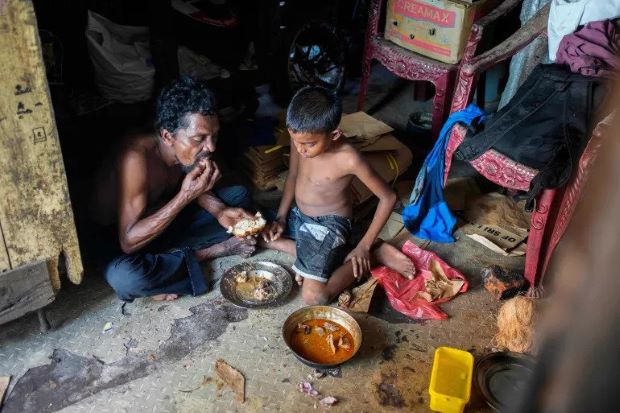South Asia leads the world in food insecurity
By Sachi Satapathy
Misguided priorities combined with short-term political thinking have made South Asia the world’s epicentre of food insecurity, as roughly 1.4 billion (72.2%) people in this region are unable to afford even the cheapest, locally available healthy meals.
According to the Food and Agriculture Organization’s latest report, ‘Asia and the Pacific – Regional Overview of Food Security and Nutrition 2023’, many struggle to manage two square meals for their family. Clearly, government policies on food accessibility and distribution are not working well on the ground.
The underlying problem runs deep, as 74.1% of Indians, 82.8% of Pakistanis, 76.4% of Nepalis, 66.1% of Bangladeshis, and 55.5% of Sri Lankans faced serious difficulties and challenges in managing a healthy meal for their family in the 2021-22 fiscal year. It also reported that women suffered the highest prevalence of moderate to severe food insecurity, at 42.7% compared with men at 37.3%.
With almost three-fourths of the population in the region staring at a food crisis, governments in these countries must not urgently reflect on what existing policies, strategies, and institutional mandates support or hinder coherent actions toward food-system goals and how to resolve policy incoherence across sectors. Inaction will lead to more hunger, more poverty, greater inequality, and severe social unrest.
Hunger fuels unrest
Several incidents of unrest across the region since 2020 indicate that many people in these countries are unable to access basic food items because of high prices. The 2022 demonstrations in Sri Lanka show how food inflation can bring massive social unrest, and if not addressed, it can even topple the government.
Bangladesh raised fuel prices by more than 50%, which triggered protests over the rising cost of living. High inflation and rising food prices have led to a reduction in the consumption of meat and fish by 96% and 89% respectively in the last six months in Bangladesh.
Nepal’s 29 million people are facing a surge in food and energy prices, raising the risk of social unrest. Data released by the Nepal Rastra Bank show that annual retail inflation accelerated to a six-year high of 7.52% in mid-August, thus making life for most Nepalis extremely difficult.
In India, food inflation, which accounts for nearly half of the overall consumer price basket, was 8.7% in November. Food prices in Pakistan increased by 27.95% in the same month.
The above data point to the fact that about 1.4 billion people are in the midst of a crisis, struggling to access food with no clear end in sight. Unchecked high food prices are only making the situation worse.
As of today, there is neither a country-level concrete strategy or action plan nor a joint regional-level cooperation mechanism to check food prices. The food security situation will not improve unless governments regulate soaring essential food items.
Rising food prices continue to squeeze the living standards of millions – and taming it should be the priority for national governments in the region.
-Sachi Satapathy is an international development practitioner who has worked on large-scale projects. His interests are in public policy, poverty alleviation and public-private partnerships for development in middle-income and developing countries. This article was originally featured on asiatimes.com



Comments are closed, but trackbacks and pingbacks are open.